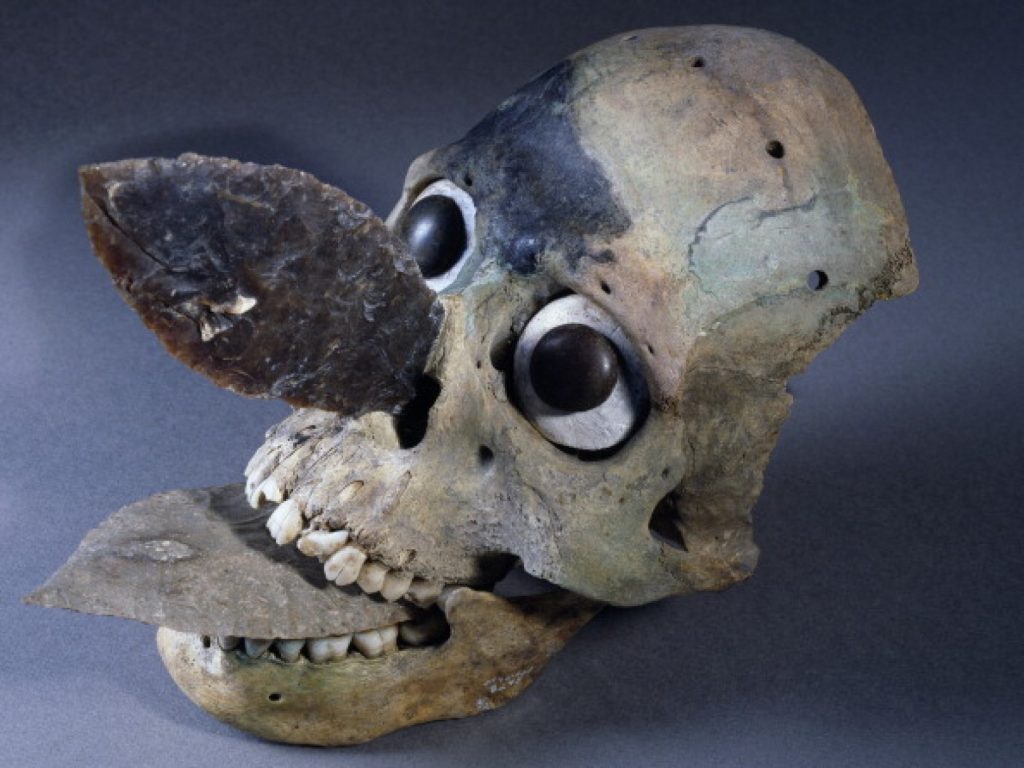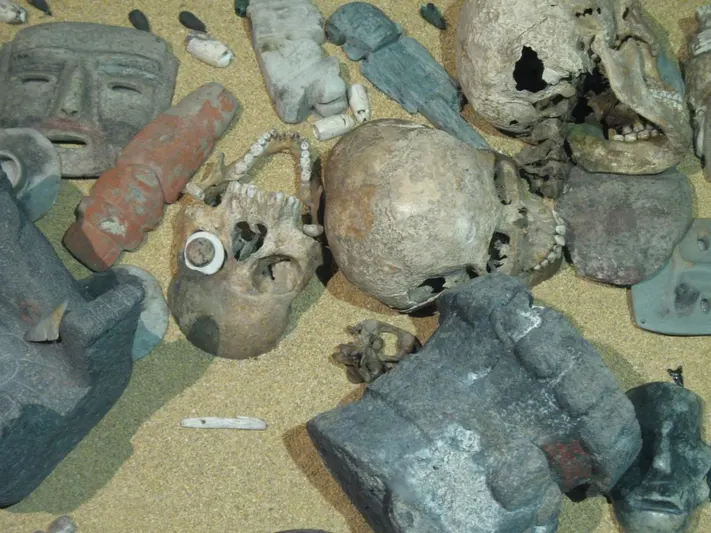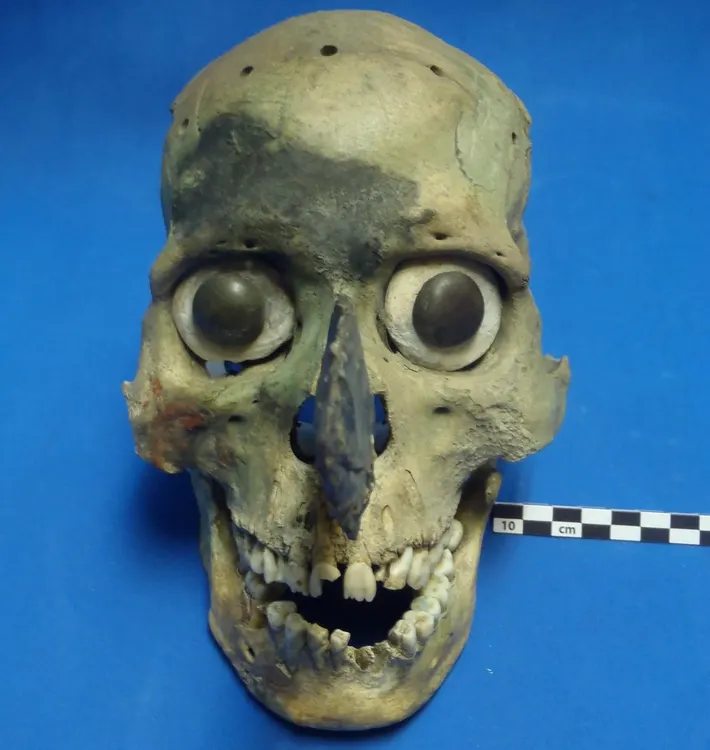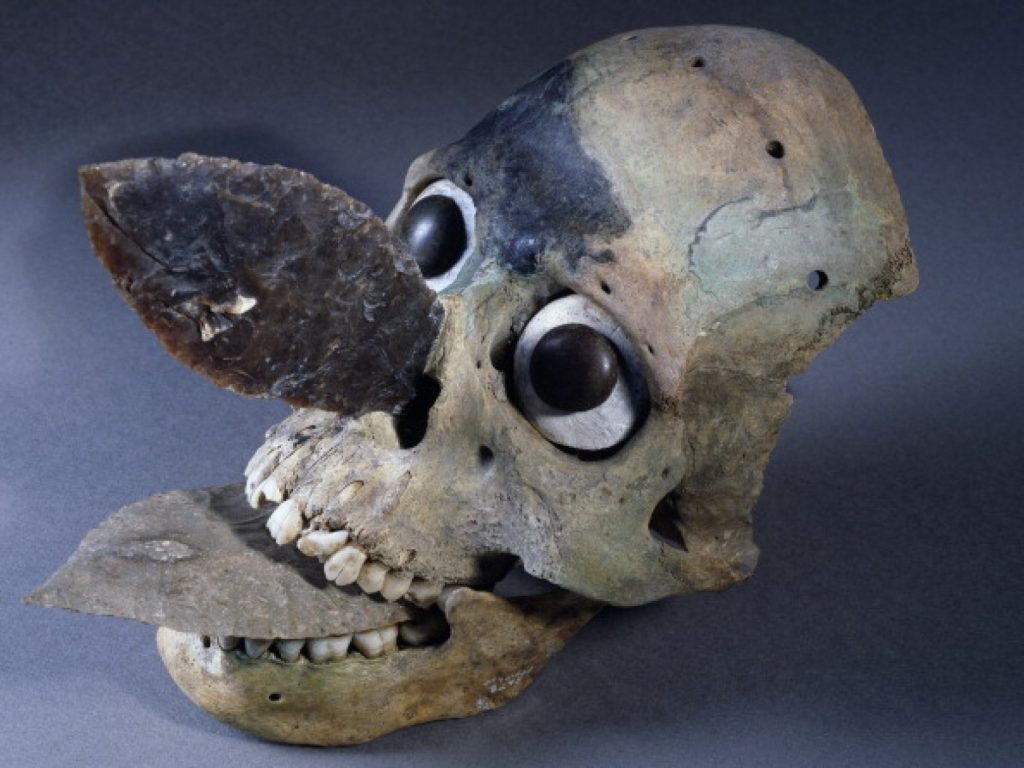
Unveiling the Enigma: Resolution to the Puzzle of Aztec Skull Masks Revealed
Ancient human skull masks left as offerings at an Aztec temple may have been crafted from the bones of defeated warriors and slain members of the nobility.
Found alongside 30 decapitated skulls at the site of the Templo Mayor in Mexico, the eight morbid masks have puzzled archaeologists since their discovery, with little known about who or where they came from.

Through new archaeological studies, researchers have now been able to determine that the two groups of victims came from different geographic origins and social status, solving a mystery that’s spanned more than three decades.
Decorative human skull masks, top row, were made to be worn over the face or as a part of a headdress, and left as offerings to the deceased. Parts of the bone were removed, and the skulls were dyed and modified, some with blades jutting from the nasal cavitie. Unmodified offerings are shown on the bottom row
The artefacts found at the Templo Mayor are thought to have been buried with individuals of high social status, the researchers explain in the new study, published to the journal Current Anthropology.
The masks, along with the 30 unmodified skulls, date back to the reign of emperor Axayacatl (AD 1468–1481).

Decorative human skull masks were made to be worn over the face or as a part of a headdress, and left as offerings to the deceased.
Parts of the bone were removed, and the skulls were dyed and modified, some with blades jutting from the nasal cavities and shell or pyrite inlays in the eye sockets.
These offerings were found near the temple Huitzilopochtli, which the researchers say suggests the bones came from warriors who had been captured and sacrificed.
The researchers, led by Corey Ragsdale of the University of Montana, tested various techniques to reveal which tools would have been used in the manufacturing process.
They compared the cut marks and drill holes seen in the masks with experimental replicas made on human bone in the Experimental Archaeology Workshop at the Museo del Templo Mayor in Mexico City.
With these techniques, they determined that the masks were likely produced locally at the Templo Mayor.

An Aztec skull mask is pictured left. An Aztec-style chert knife has been placed in the nose, and the eyes are made from shell and pyrite. Researchers compared the cut marks and drill holes seen in the masks with experimental replicas made on human bone at the Museo del Templo Mayor. A replica is shown on right
The researchers, led by Corey Ragsdale of the University of Montana, tested various techniques to reveal which tools would have been used in the manufacturing process. Ragsdale is pictured above, along with one of the offering skulls
They also looked at age, sex, and pathological conditions of the remains to understand the differences between the individuals used to create masks, and those that were unmodified offerings.
Then, they analysed dental traits to trace the geographic origin and population affinity of the victims, comparing them with patterns seen in the surrounding areas.
Through these analyses, the researchers found major differences between the two types of offerings.
The skull masks were all created from adult males, between the ages of 30 and 45.
There was no evidence found of dental disease or nutritional stress, and the researchers say they align with patterns seen among individuals of high status and those associated with war.
Found alongside 30 decapitated skulls at the site of the Templo Mayor in Mexico, illustrated above, the eight morbid masks have puzzled archaeologists since their discovery, with little known about who or where they came from




